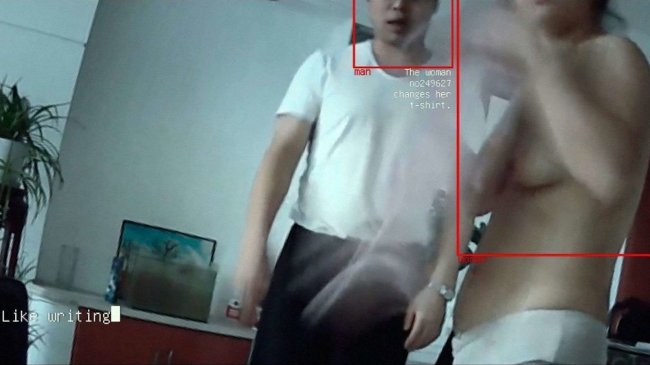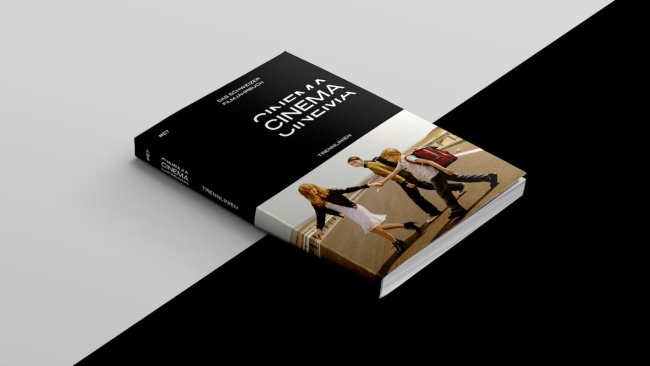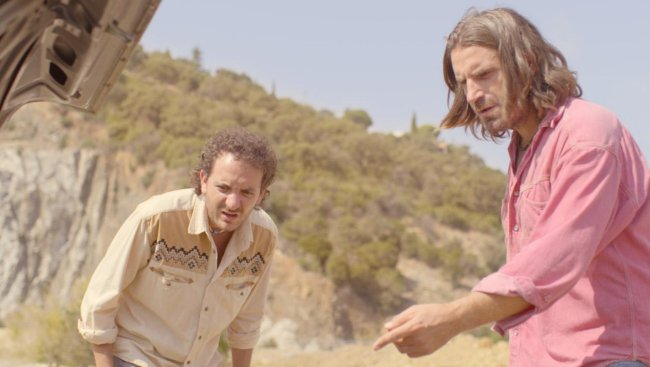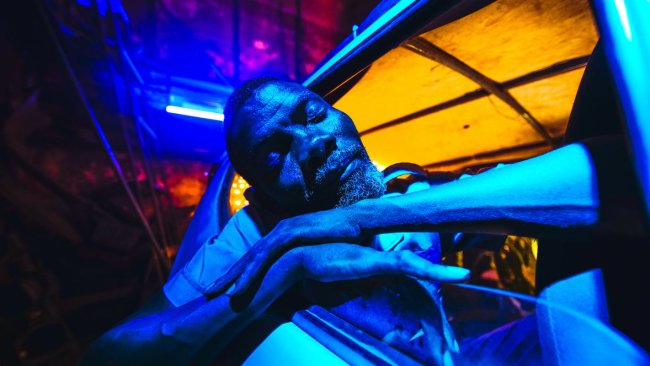Masterclass Peter Greenaway
[…] And in fact, his plea for the visual specificity of cinema refers to an avant-garde gesture: «If Manet did painting-painting, I do cinema-cinema».
[…] That’s why he declares the necessity of overcoming the rigidity of frames in cinema, of going beyond the recreational-reproductive stupidity of the camera, «the dead person’s eye».
Text: Giuseppe Di Salvatore
«Frames don’t exist», «Stories don’t exist», «The camera is a stupid machine», «The movie theatres are made for just one person, you see, this guy who is seated at the centre, there… yes, you, you are the only person in the theatre who can properly watch the images on the screen!» – Peter Greenaway’s Masterclass at the Salle Communale in Nyon has been a three-hour monologue full of shocking declarations. Greenaway likes to provoke, playing the know-it-all and the entertainer at the same time. One could say that his energetic performance was just a demonstration of professorial arrogance; another, that it witnessed a passionate enthusiasm for the cinema and a rare generosity of reflections. What he wishes for his cinema, for it to be «a mixture of education and entertainment» («education alone would be boring, entertainment alone would be forgettable»), he actually realized in his speech, which cannot be blamed of ambiguity. Even his most debatable statements are coherent with two or three main questions about the moving images that are really worth noting.
The first is the question of what he calls «visual literacy». Even if the filmic language is a complex mixture of different media, sound, image, and text, Greenaway is right to underline how Western culture has been, and probably still is, dominated by the textual model of the narrative: for him, even painting was historically always thought of in terms of the illustration of texts (starting with the Bible) – at least before the Modernist avant-garde. And, in fact, his plea for the visual specificity of cinema refers to an avant-garde gesture: «If Manet did painting-painting, I do cinema-cinema». Greenaway portrays himself as the one who tries to give value to the specificity of the medium cinema. And that is the typical Modernist attitude – in the sense of Clement Greenberg’s understanding of it, when he spoke of the “flatness” in painting as the key of the Modernist revolution against art as reproduction or illustration. For Greenaway, the flatness of cinema would not only be the visual literacy, but also the assumption of the specificity of the movement of images as connected to the fact that the human eye is not locked onto fixed frames, but constantly moving. That’s why he declares the necessity of overcoming the rigidity of frames in cinema, of going beyond the recreational-reproductive stupidity of the camera, «the dead person’s eye». Furthermore, he declares the necessity of being freed from the sound synchronization dictatorship («Cinema started to decline in 1929, with the introduction of synchronized sound»). Music should be an element to play with, not a restrictive rule for the creative work on images.
All of these reflections on the formal aspects of cinema find an interesting continuation through Greenaway’s serious consideration of the digital revolution. On one side, «Cinema died in 1983 with the introduction of the remote control»: the era of free manipulation of the movie reception consecrated the victory of private screenings over public movie theatres. On the other side, «very few people really make use of the huge potentialities of the digital, but they use the digital just to repeat the analog». The digital potentialities provide a great opportunity for Greenaway to vindicate the creativity of the visual layer and to expand cinema in architecture, through the use of multiple screen in installative, complex works. «Imagination is the greatest device in the universe», he says, and it is realized through some very artificial constructions. One of them, which occupies a large part of his recent work, is the construction of systems of projections on preexisting images. In the case of Rembrandt’s “Nightwatching” project or Leonardo’s “L’ultima cena” project, for example, where digital elaborations of the painting were selected and projected on the painting itself, Greenaway expands his work on images towards a self-reflective development. This expanded digital form of cinema produces a new concentration on performance and on the question of time, both among Greenaway’s greatest obsessions. That’s why he labeled his present cinema a «non-narrative present-tense multiscreen cinema».
Greenaway’s performance at Visions du réel was very interesting, because, even despite its educational and entertainment purposes, it gave us the possibility of returning to important questions about the formal aspects of the world of moving images in a historical and contemporary perspective at the same time. One has great difficulty in understanding why a literally visionary figure like Peter Greenaway has received the award of “Maître de réel”… – furthermore, in his speech, he said some violent words against any discourse about reality. But, generally, we could understand his presence at Visions du réel: it is a nice way to underline how the Nyon festival strongly advocates for a reality that deserves visions – even visionary visions.









